Educator Guides
-
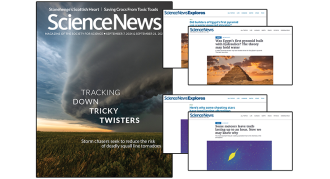
Investigating Phenomena with SEPs and Hydraulic Engineering CER
Use shooting stars as an example phenomenon to explain how phenomena are studied using the Science and Engineering Practices and have students evaluate the claim, evidence and reasoning for why hydraulic engineering may have helped ancient Egyptians build the pyramids using these lesson plans tied to articles from the September 7 & 21 issue of […] -

Woolly Mammoth DNA and A New Element
Use news articles from the August 24 Science News issue to discuss a new possible element and learn how elements get onto the periodic table and practice what happens during transcription and translation while learning about recently analyzed woolly mammoth DNA. -
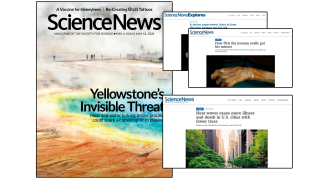
Data Literacy and The Iceman’s Tattoos
Integrate recent articles from the May 4 & 18 issue of Science News to have students discuss how graphs can promote misinformation and learn about unconventional approaches to tattooing while answering experimental design questions. -
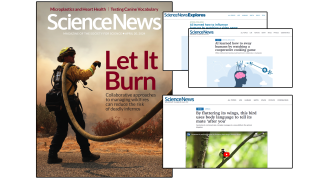
AI Influence and Organism Observations
Use two articles from the April 20 issue of Science News to have students think critically about methods of training AI that can teach them how to influence human behavior and have students conduct observations of an animal and reflect on what they can learn about animal behavior. -

Forest Neutrino Detectors and 3D Vertebrate Anatomy
Have students explore an archive of 3D scans of vertebrate anatomy and form a scientific question and learn how scientists could use trees to help detect high-energy neutrinos using these lesson plans paired to articles from the April 6 issue of Science News. -
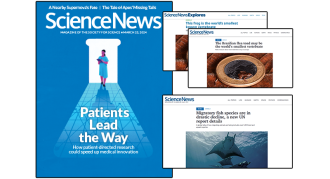
Endangered Migratory Species and A Tiny Toad
Integrate two articles from the March 23 Science News issue to have students analyze and compare two graphs of endangered migratory species and answer questions on the smallest known species of vertebrate and amphibian, the Brazilian flea toad. -

Doggie Data and the April 8 Eclipse
Check out recent articles from the March 9 issue of Science News to have students explore data about their favorite dog breeds from a furry research study out of the U.K. and learn about different factors of the solar eclipse on April 8 that will make it especially rare for both scientists and observers. -
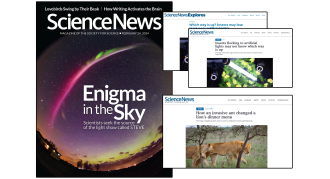
Ant Ecosystem Disruption and Insects to Light
Use two articles from the February 24 issue of Science News to have students evaluate the data from a recent study and determine if the old saying, “like a moth to a flame” might need a revision and outline the cascading effects that one tiny ant species can have on a savanna-wide food web. -
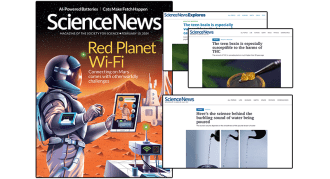
Water Burbling Physics and THC and the Teenage Brain
Have students investigate the physical science behind everyday phenomena, like the sound of running water, and critically analyze the potential risks of consuming THC-products using these lesson plans paired to two Science News articles from the February 10 issue. -

Analyze a Clinical Trial and Horned Reptiles
Engage students with news articles from the January 27 Science News issue to have them answer graphical analysis questions about a gene editing medicine’s clinical trial and comprehension questions about how evolutionary trees may help scientists determine if reptiles with a certain hunting style are more likely to have horns. -

AI in Bioacoustics Research and Napping Penguins
Integrate two articles from the January 13 Science News issue to have students explore how AI was used as a research tool in a recent bioacoustics bird study and how an adaptation of the chinstrap penguins’ allows them to keep their guard up while grabbing a few z’s. -

Evaporation by Light and Scaling Telescopes
Use articles from the December 16 & 30, 2023 issue of Science News to have students investigate a recent study about how light, and not just heat, may aid in the evaporation of water and how describing aspects of The Great Magellan Telescope can provide many examples of scale and relative values.